by Carly Eden Stokes | Aug 19, 2020 | Blog, News
What happens when you inject healthy cells into damaged eyes? Click the article link below to learn more about a recent study on this topic.
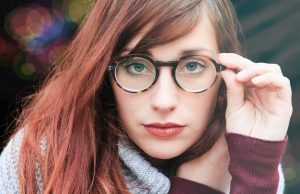
A redheaded woman with large green eyes adjusts her glasses as she stares into the camera.
University of Toronto Engineering researchers have developed a new method of injecting healthy cells into damaged eyes. The technique could point the way toward new treatments with the potential to reverse forms of vision loss that are currently incurable. Around the world, millions of people live with vision loss due to conditions such as age-related macular degeneration (AMD) or retinitis pigmentosa.
by Carly Eden Stokes | Aug 12, 2020 | Blog, News
Americans may not be eating enough of the foods and nutrients that they need to protect their eye health. Click the article link below the image to learn what nutrients you may need to be eating more of!
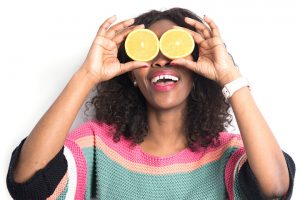
A smiling, laughing woman in a multi-colored shirt holds lemon wedges in front of her eyes in a silly way.
According to the World Health Organization, global average life expectancy continues to rise and is increasing faster than it has at any other time during the last 50 years. Approximately 9 percent of the world’s population is 65 or older; this number is expected to grow to 17 percent by 2050.
by Carly Eden Stokes | Aug 6, 2020 | Blog, News
Learn what a simple red light could do for eyesight!
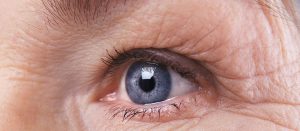
A close-up bright blue eye stares to the side.
With the retina aging quicker than other organs in the body, due to the high concentration and decline of mitochondria in photoreceptors (light-sensitive rods and color-sensitive cones), researchers in a new study took a fresh look at improving mitochondrial function. The study was published June 29 in the Journals of Gerontology: Series A.
by Carly Eden Stokes | Jul 29, 2020 | Blog, News
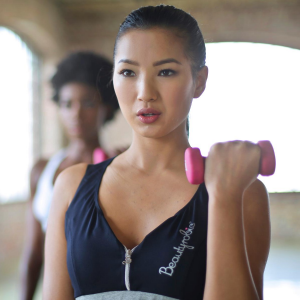
A dark-haired woman in a black top breathes out slowly as she lifts a small pink weight.
How can exercising help to slow or prevent vision loss? ScienceDaily.com shares some insights on how exercise can slow or prevent several common causes.
Exercise can slow or prevent the development of macular degeneration and may benefit other common causes of vision loss, such as glaucoma and diabetic retinopathy, new research suggests. The new study from the University of Virginia School of Medicine found that exercise reduced the harmful overgrowth of blood vessels in the eyes of lab mice by up to 45%.
by admin | Jul 28, 2020 | News
Blind since birth, Christina Brino spent eight years of her career developing self-help groups for people with vision impairment at St. Clare’s Medical Center. She then served 15 years as the disabilities coordinator for Morris County’s Office for the Disabled. After retiring, Brino volunteered with VLANJ as an apps group facilitator before the nonprofit hired her as a technology instructor. She is one of two instructors of the virtual Tech Talks monthly series. The Pompton Plains resident also volunteers for the Seeing Eye, which has provided her six guide dogs over the years, including her current one, a black Labrador named Shasta.
Jackie Millard had just completed teacher training following a 17-year career as a product manager at AT&T/Lucent Technologies when she lost her sight in 2004. Millard became a community volunteer, a leader of her church choir and a yoga instructor. AT VLANJ, the Long Valley resident learned screen-reader technology for computers and later how to use iPhone features and apps to assist her. Millard shared what she learned as a VLANJ volunteer, before she was hired as an instructor. Millard is part of VLANJ’s Essential Low Vision instructor team.
Susanne Sytsma worked 25 years as a registered nurse caring for patients in intensive care, neurology and oncology departments until vision loss forced her to retire. At VLANJ, Sytsma learned skills to regain her independence. The Jefferson Township resident became adept at technology and volunteered in the technology program. As an instructor, Sytsma conducts iPhone/iPad training for VLANJ in addition to teaching the virtual Tech Talks monthly series. The married mother of two and grandmother of an 8-year-old grandson counts Valdez, her Seeing Eye dog, as part of the family.
by Carly Eden Stokes | Jul 22, 2020 | Blog, News
Do your glasses constantly fog up while wearing your face mask? Here are some helpful tips from the University of Utah Health:
If you wear glasses and are helping slow the spread of coronavirus by wearing a mask, you’ve probably experienced foggy lenses the moment you put on the mask. What to do? An optical shop expert at the John A. Moran Eye Center shares some tips.
by admin | Jul 20, 2020 | News
Working in Manhattan after college, Carol Burgio marveled at people with vision loss who confidently navigated the midtown streets. “They seemed fearless,” Burgio said. She began volunteering for a nonprofit in the neighborhood that helped people with severe visual impairment. After she and her husband relocated to Denville in 2002, Burgio discovered the town was home to New Jersey Foundation for the Blind. Unfortunately, her long days commuting to New
York for work in finance prevented her from volunteering regularly.
Fast-forward to May 2019: Vision Loss Alliance of New Jersey advertised for volunteers for its ‘Beyond Sight’ picnic on the first Saturday in June. Burgio jumped on the opportunity — not realizing VLANJ was the former New Jersey Foundation for the Blind. At the picnic, she met Carl Augusto, a VLANJ trustee (now board chair). Then she volunteered at Dining in the Dark in October. At Augusto’s urging, Burgio joined the board of trustees in November. “I have so much respect for people who are visually impaired. They inspire me,” Burgio said. Burgio, who has more than 20 years of experience working in the futures industry, intends to use that expertise to help VLANJ remain financially sound. Burgio is a senior product specialist with the Global Markets division of Santander Bank. She works in the Exchange Traded Derivatives department assisting Latin American clients.
“I’m so impressed by the range of programs and services Vision Loss Alliance offers, and by the camaraderie and fun the participants share,” she said. When VLANJ had to close its locations because of the COVID-19 pandemic, the nonprofit moved quickly to get key programs online. That included a newly created Tech Talks, which delves into technologies that can make participants’ lives easier. “It’s so important to have a good command of technology,” she said. She’s also a fan of the meditation and mindfulness offerings, which “help ease anxiety caused by COVID-19 and provide a sense of connectedness.” Burgio lives with her husband, Jake Ray, a special education teacher.
by admin | Jul 20, 2020 | News
Carl Augusto is passionate about Vision Loss Alliance of New Jersey’s work empowering people who are visually impaired. “Severe vision loss is a serious challenge, but with the right attitude, perseverance and adaptive skills, people can — and do — live and work with dignity and success alongside their sighted
peers,” Augusto said. “Our students prove that every day.’’ Augusto, himself blind, took over as chair of the Vision Loss Alliance of New Jersey Board of
Trustees last month. The retired president and CEO of the American Foundation for the Blind said he will seek to increase financial support so VLANJ can expand beyond its current communities. VLANJ is the only non-governmental, comprehensive life-skills training program in the state for adults with vision loss.
“My vision is that Vision Loss Alliance will continue to grow, serving more people and covering more areas in New Jersey,” said Augusto, who joined the board in 2016. Augusto is proud VLANJ introduced low vision occupational therapy services in 2018, and that it’s prepared to kick off the Technology Learning Lab. He said the staff impressed him by quickly shifting programs onto Zoom after the COVID-19 crisis forced shutdowns. The 74-year-old has included the nonprofit in his will, and he hopes others will follow his lead. “Increasing legacies will ensure that VLANJ continues to serve future communities of people with vision loss,” Augusto said.
Augusto has been a successful advocate at VLANJ’s Dining in the Dark events. Last year, after guests ate a three-course meal with their eyes covered and heard moving testimonials from VLANJ participants, Augusto took the stage. He asked guests to commit on the spot to making a donation. The effort added several thousands of dollars to the fundraiser’s total.
In addition to increasing contributions and the donor base, Augusto is committed to expanding the trustee board. “We want to include members with a diversity of expertise to maximize the board’s ability to govern VLANJ at the highest level,” he said. Augusto began losing his sight at age 8 to a recessive gene disorder. During the 45 years the disease took to fully claim his sight, he learned adaptive skills like Braille and using a cane
before he needed them, and came to terms with it emotionally as a young man. Before his 45-year career in the blindness field, Augusto was a rocker. He played guitar and sang in three 1960s rock bands over seven years. The last one, Pulse, released an album as well as several singles. Augusto left the band for graduate school, earning a master’s degree in rehabilitation counseling. He went on to lead regional and national organizations for 31 years, including 25 at the AFB.
The Mahwah resident and father of two traveled extensively for work. He and his wife, Sue, continue to seek out warmer climes in the winter. Augusto said he cannot wait for the couple’s next adventure.
by admin | Jul 20, 2020 | News
Vision Loss Alliance of New Jersey was about to launch its long-awaited Technology Learning Lab when the COVID-19 pandemic forced the nonprofit to temporarily close its locations. Nine students had signed up for the six-week pilot to learn the Microsoft Windows 10 operating system for desktops and laptops. They would use JAWS, a screen reader, or Fusion, a combination screen reader and text magnifier.
VLANJ put the Technology Learning Lab on hold, and introduced Tech Talks, a monthly webinar that covers a different technology topic each session. The webinar is funded by a major grant from The Provident Bank Foundation.
In Tech Talks, instructors Susanne Sytsma and Christina Brino demonstrate a technology and answer participants’ questions during the hourlong class. For example, the 15 people who participated in the first Tech Talks were shown how to use the Zoom video conferencing app for computers, iPhones and iPads. “There’s a lot to learn, especially on computers because it involves many key strokes,” Brino said. During a second session in May, participants discussed grocery store shopping apps. Zoom has become an important platform for VLANJ. The nonprofit in early April began offering virtual versions of its Beyond Sight wellness classes, support groups, and an apps club using Zoom to keep participants active and connected.
Future Tech Talks topics include navigating Facebook; using the Braille and Audio Reading Download (BARD) service; an introduction to Fusion; and Amazon Basics. The free sessions are held the fourth Wednesday of each month at 7 p.m. They are open to all with vision loss. To register, or if you have questions, send a message to BeyondSight@vlanj.org. Registrants gain access to the VLANJ Tech Talks Facebook group.
Not yet knowing when locations can reopen, VLANJ now plans to roll out a virtual version of the Technology Learning Lab, VLANJ Executive Director Kris Marino said. One student is currently enrolled in a test run. The Technology Learning Lab will teach participants computer skills that could help them gain employment, Marino said. The initiative has attracted financial support from The Provident Bank Foundation, The William G. and Helen C. Hoffman Foundation, and The Hyde and Watson Foundation. While VLANJ participants have embraced the virtual class offerings, “we’re all missing Vision Loss Alliance and being together,” Sytsma said.
by admin | Jul 20, 2020 | News
Jackie Millard’s encouraging voice comes over Zoom’s audio, piano music tinkling. She directs listeners in their own homes to sit comfortably, then inhale deeply and exhale slowly. “Feel the slow cycle of the breath moving in and out of the body; it’s like a gentle wave,”she says. Spring is a time of renewal, she notes.“Even in this time of challenge, we can use this opportunity to try something new, to think in a new way.”
Welcome to Now and Zen, a virtual yoga class Vision Loss Alliance of New Jersey is offering during the COVID-19 crisis. VLANJ tapped Millard, one of the nonprofit’s instructors, to teach the hour-long hatha yoga class on Wednesday mornings.
“I think that in this time, we all can benefit from the calm and stillness,” said Millard, who became a certified yoga instructor seven years ago.
During a recent class, Millard had students begin the session seated, imagining “white light flowing from the base of our spine, through the torso, through the neck, to the crown of the head.” She then had them visualize the light flowing “like a fountain” down the outside of their bodies, spreading relaxation. Millard led students through head-to-toe stretches. She then had them stand for a series of gentle yoga poses. The class moved to nostril breathing exercises.
She rounded out the class with a relaxing guided meditation: students imagined walking through woods, coming upon a river gently flowing over rocks and logs. That, she said, is how people can approach life, “moving over and around obstacles…yielding and bending…moving peacefully and calmly forward.” In the final minutes, the class offers divine peace to the world, repeating the word, “Shanti.”
In addition to teaching Now and Zen, Millard takes five yoga classes a week. Millard, who is blind, teaches mobile technology and essential low vision classes, which were suspended mid-March because of the coronavirus response restrictions. She is one of three instructors for the new Technology Learning Lab, which will launch once the Denville location reopens.
Now and Zen is free to anyone who lives with vision loss. To register, or if you have any questions, send a message to BeyondSight@vlanj.org.
by admin | May 24, 2020 | Blog, News
Article by Edd Gent via Singularity Hub
A New Bionic Eye Could Give Robots and the Blind 20/20 Vision
Image Credit: Free-Photos from Pixabay
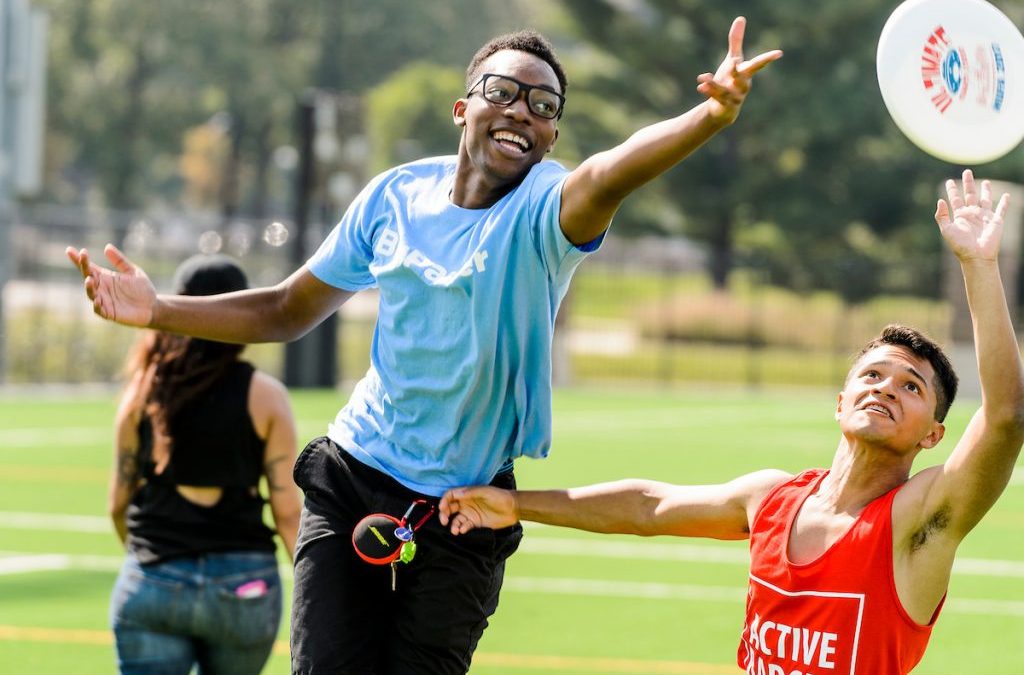
by admin | May 23, 2020 | Blog, News
As May is coming to a close and a lot of us are beginning to spend more time outside, it’s imperative to take one more look at eye safety – May is Sports Eye Safety month after all.
Why the focus on eyes? Aren’t sports supposed to be fun and good for your health?
Yes, sports are generally great for your health, but they can also bring about lots of injuries! More than 600,000 eye injuries related to sports occur each year, and approximately one-third of these injuries occur in children. Eye injuries, coincidentally, are the leading cause of blindness in children, and most eye injuries among kids aged 11-14 occur while playing sports.
What kind of injuries are we talking about?
Sports eye injuries can range from abrasions of the cornea and bruises of the lid to internal eye injuries, such as retinal detachments and internal bleeding. Nearly 43 percent of sports-related eye injuries involve children under the age of 15.5 and boys between the ages of 11 and 15 are up to five times more likely to sustain eye injuries requiring hospital treatment than girls of the same age. Every 13 minutes an emergency room in the U.S. treats a sports-related eye injury for children and adults. It is also estimated that sports-related eye injuries in the U.S. account for more than 100,000 physician visits per year at a cost of more than $175 million . Of the 1.6 to 2.4 million Americans who sustain eye injuries each year, an estimated 40,000 will be legally blinded in the injured eye.
How can you protect your eyes?
Taking all of this data into account, it’s astonishing that the number of people who use protective eyewear (safety glasses or goggles) is extremely low. Yet, the best way to prevent a sports-related eye injury is to wear appropriate, sport-specific protective eyewear that is properly fitted. The American Academy of Pediatrics, American Academy of Ophthalmology and American Optometric Association all strongly recommend protective eyewear for all participants in sports in which there is a risk of eye injury, whether it be tennis, golf, basketball or any other sport. Bottom line – get some eye gear and keep your eyes safe when playing sports.
Image via University of Wisconsin.
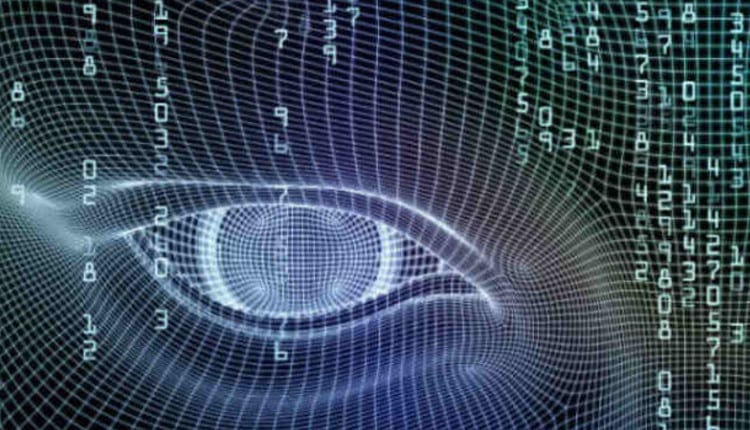
by admin | May 20, 2020 | Blog, News
Google has developed an Artificial intelligence (AI)-based system that performed as well as, and in certain cases better than, clinicians in predicting progression of a common eye condition that can cause vision loss.
The results, published in the journal Nature Medicine, suggest that the AI model, built in partnership with Alphabet subsidiary DeepMind and Moorfields Eye Hospital in Britain, could help doctors study preventive treatments for age-related macular degeneration (AMD), the third largest cause of blindness across the globe.
Around 75 per cent of patients with AMD have an early form called “dry” AMD that usually has relatively mild impact on vision.
A minority of patients, however, develop the more sight-threatening form of AMD called exudative, or “wet” AMD. This condition affects around 15 per cent of patients, and occurs when abnormal blood vessels develop underneath the retina.
These vessels can leak fluid, which can cause permanent loss of central vision if not treated early enough. Wet AMD often affects one eye first, so patients become heavily reliant upon their unaffected eye to maintain their normal day-to-day living.
Unfortunately, 20 per cent of these patients will go on to develop wet AMD in their other eye within two years. The condition often develops suddenly but further vision loss can be slowed with treatments if wet AMD is recognised early enough.
The new research showed that the Google Health AI model has the potential to predict whether a patient will develop wet AMD within six months.
The researchers trained their model using a retrospective, anonymised dataset of 2,795 patients. These patients had been diagnosed with wet AMD in one of their eyes, and were attending one of seven clinical sites for regular 3D optical coherence tomography (OCT) imaging and treatment.
For each patient, the researchers worked with retinal experts to review all prior scans for each eye and determine the scan when wet AMD was first evident.
The AI system is composed of two deep convolutional neural networks, one taking the raw 3D scan as input and the other taking a segmentation map outlining the types of tissue present in the retina. It used the raw scan and tissue segmentations to estimate a patient’s risk of progressing to wet AMD within the next six months.
In the future, this system could potentially help doctors plan studies of earlier intervention, as well as contribute more broadly to clinical understanding of the disease and disease progression.
Article via Express Computer. Click the link below for more info!
https://www.expresscomputer.in/artificial-intelligence-ai/google-ai-could-predict-eye-condition-behind-vision-loss/56246/
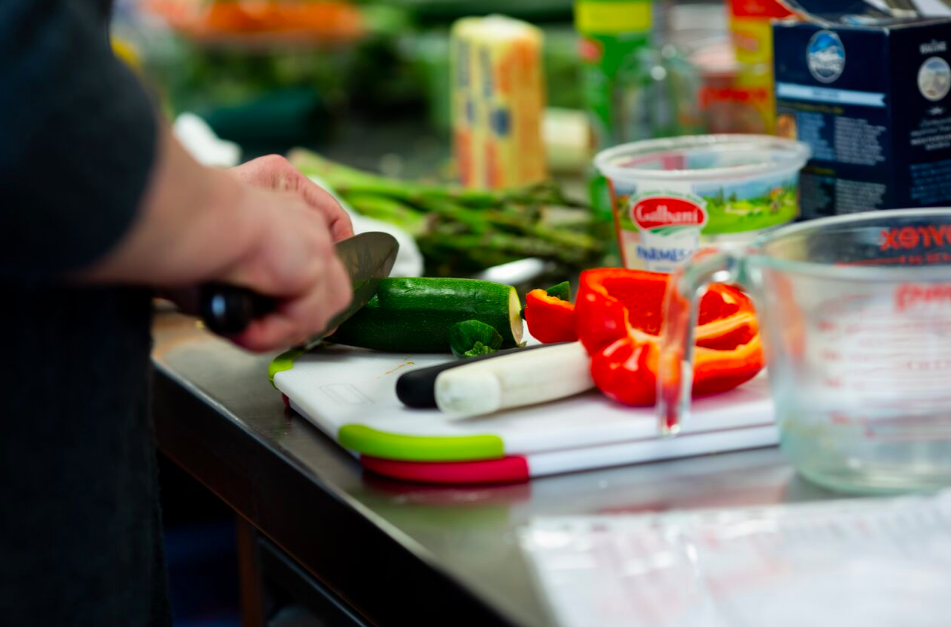
by admin | May 17, 2020 | Blog, Program
Made possible by a generous grant from The Provident Bank Foundation, VLANJ Tech Talks discusses accessible technologies and accessibility features of personal computers, iPads and iPhones. The classroom is virtual, conducted via Zoom, and free for all attendees.
In our next session, taking place on Wednesday, May 27th from 7PM to 9PM EST, we discuss grocery store shopping apps and the Amazon shopping app. Learn what shopping options are available for people with vision loss and find ways to navigate shopping for groceries and other necessities from home.
Registration is required for this class, as spots are limited. Use the link below to register:
https://us02web.zoom.us/meeting/register/tJEucuCupzMqEt3AsqebyOHAllv5-knTE7am
After registering, you will receive a confirmation email containing information about joining the meeting. For more information, email beyondsight@vlanj.org.
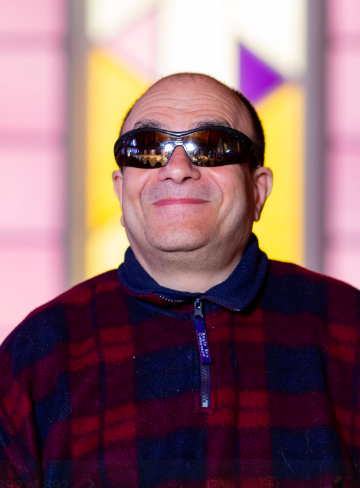
by admin | May 11, 2020 | Blog, News
May is Healthy Vision Month. It’s important to have a comprehensive dilated eye exam once a year to check for common eye problems. Taking care of your eyes is a priority, just like eating healthy and getting physical activity. While in quarantine, it may not be possible to get an eye exam; however, there are things you can do to protect your eyes.
Eat right to protect your sight.
Keep your eyes healthy by eating a well-balanced diet. Load up on different types of fruits and veggies, especially leafy greens like spinach, kale, and collard greens. Fish like salmon, tuna, and halibut have been shown to help your eyes, too.
Get moving.
Being overweight or obese can put you at higher risk for diabetes and other conditions that can lead to vision problems. Exercise keeps your weight in check!
Speak up if your vision changes.
Is your vision blurry? Do you squint a lot? Ever have trouble seeing things? Consult your ophthalmologist if your eyes are bothering you or if you notice any changes in your vision.
Keep the germs away.
Always wash your hands before putting them close to your eyes, especially if you’re putting in or taking out contact lenses.
Gear up.
Playing your favorite sport? Using chemicals to clean your home? Mowing the lawn? Wear the right protection to keep your eyes safe. Many eye injuries can be prevented with better safety habits, such as using protective eyewear.
Wear your shades.
The sun’s rays can hurt your eyes. Choose sunglasses that block 99% or 100% of both UVA and UVB radiation from the sun. And remember, you should never look directly at the sun.
Give your eyes a break.
Do you spend a lot of time looking at a computer, phone, or TV screen? Staring at any one thing for too long can tire your eyes. Give your eyes a rest with the 20-20-20 rule: Every 20 minutes, look about 20 feet away for 20 seconds.
Say no to smoking.
Did you know that smoking is as bad for your eyes as it is the rest of your body? Smoking can put you at risk for some pretty serious eye issues, which can lead to blindness.
Talk about it.
Does anyone in your family have issues with their eyes? Not sure? Ask! Talking about eye health with your family can help all of you stay healthy, and discover any underlying hereditary or genetic issues with your eyes!
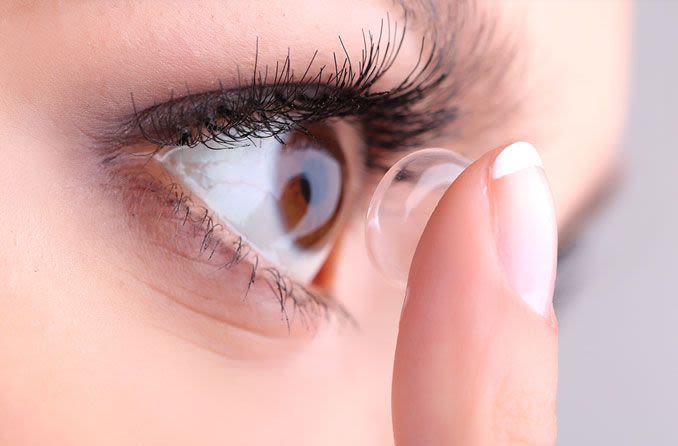
by admin | May 5, 2020 | Blog, News
Health experts are urging people to avoid touching their face, as SARS-CoV-2, the virus causing COVID-19 can enter the body through the mouth, nose and eyes. This leaves millions of people across the globe who wear contact lenses wondering whether they are placing themselves at risk with use of contacts, or if they should make the switch to glasses during the pandemic. A lot of information has been circulating the internet about contact lens wearers being at higher risk of becoming infected with COVID-19, but there’s also a lot of misinformation – let’s put the rumors to rest.
There is currently no scientific evidence that contact lens wearers have an increased risk of contracting COVID-19 compared with users of eye glasses. Should you have some questions about this, it’s best to consult your ophthalmologist.
Dr. Gregory Poland, an infectious diseases expert, says it is safe for people to continue wearing contact lenses as long as they remain diligent about hygiene. And good contact lens hygiene means washing your hands with soap and water. A lot. It’s also better to avoid alcohol-based soap alternatives, or sanitizers, before inserting or removing contact lenses, as you may experience some stinging or burning. Lastly, it’s not just washing to watch out for – drying is just as important! It’s imperative to use a clean towel and dry your hands thoroughly. These habits will help you stay healthy and out of your eye doctor’s office or hospital in general.
Whether you wear contacts, glasses, or require no vision correction, you should avoid touching your eyes, nose, and mouth when your hands are unwashed, to avoid contracting any illnesses. Dirty hands mean more than just the spread of COVID-19. You can also contract Pink Eye or other eye infections or other unpleasant illnesses. Ophthalmologists recommend that you temporarily stop wearing your contacts and use your glasses instead if you become ill. Once you return to full health and have spoken with your eye doctor, it should be safe to return to contact lens use.
Lastly, there is absolutely no scientific evidence supporting rumors that everyday glasses or spectacles offer protection against COVID-19.
For more information about eye safety, contact lenses and their use, as well as information on how to protect yourself from coronavirus, visit the following website:
https://www.cdc.gov/contactlenses/protect-your-eyes.html
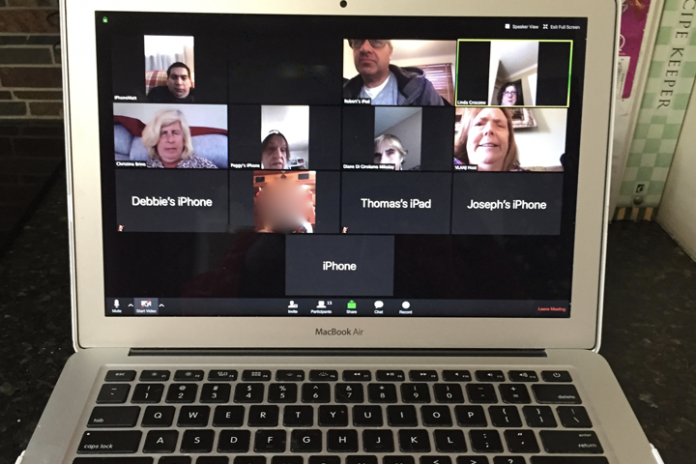
by admin | May 2, 2020 | Blog, News
When the COVID-19 pandemic forced Vision Loss Alliance of New Jersey to halt programs at its locations, that left a hole in the lives of people who are blind and visually impaired. VLANJ needed a temporary home for its Beyond Sight wellness classes, peer support groups, and an apps club, and found it through video conferencing.
“We wanted to give participants something to look forward to, and help everyone stay calm and connected,” said Linda Groszew, VLANJ’s senior program manager and volunteer coordinator. VLANJ is running Fit & Balance classes twice a week. Yoga, two support groups, and an Apps Club are offered weekly. Between nine and 14 people participate in each session using Zoom, Groszew said.
All of our classes are free to join, and all people with vision loss are welcome! Registration is required because space is limited. Find out more about how you can join our classes by emailing beyondsight@vlanj.org.
Read the full article published in Parsippany Focus here:
https://parsippanyfocus.com/2020/04/26/vlanj-goes-virtual-to-serve-people-with-vision-loss-during-covid-19-crisis/
by admin | Apr 30, 2020 | Blog, Events
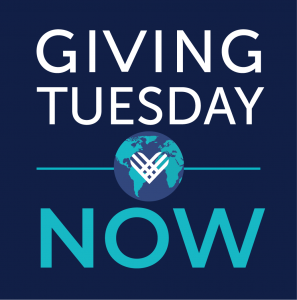
Join Vision Loss Alliance of New Jersey on Tuesday May 5th as we kick off #GivingTuesdayNow, a day dedicated to inspire donations and citizen engagement to support communities and nonprofits around the world.
Communities and individuals are encouraged to help a neighbor, advocate for an issue, or donate to nonprofits, such as Vision Loss Alliance of New Jersey, who have been impacted by the COVID-19 pandemic.
Vision Loss Alliance is a non-profit organization, dedicated to supporting individuals with vision loss. We rely on your donations to bridge the funding gap caused by the pandemic. With your help, we can continue to provide classes through our new virtual program BeyondSight to aid our students in staying connected, active, and maintaining their independence. Every little bit helps!
Donate by clicking the link below:
vlanj.org/donations
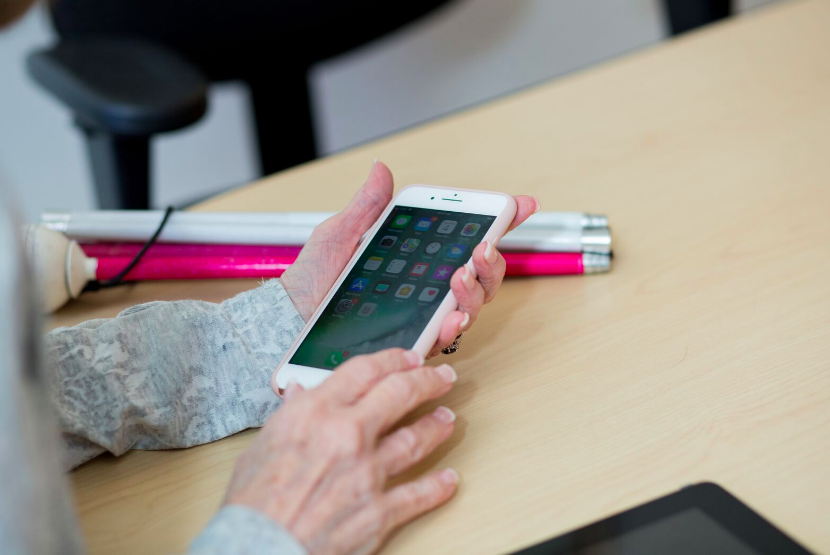
by admin | Apr 29, 2020 | Blog, News
VLANJ Tech Talks virtual classroom kicks off “Zooming” its first session this evening, Wednesday, April 29th, from 7PM to 9PM. Led by VLANJ technology instructors Christina Brino and Susanne Sytsma, VLANJ Tech Talks is a monthly technology discussion forum, overviewing different accessible technologies and accessibility features of iPads, iPhones and personal computers. Tech Talks was made possible by a generous grant from The Provident Bank Foundation.
This evening’s topic is a demonstration and discussion of the Zoom platform. Below are instructions for downloading the Zoom app, using the iPhone and iPad accessibility feature “VoiceOver”:
Link to zoom:
https://apps.apple.com/us/app/zoom-cloud-meetings/id546505307
Find: Zoom Cloud meetings, meet happy.
Find the “get” button double tap.
Sign up at the bottom of the screen, double tap,
Find email address, complete,
Find first name, complete,
Find last name, complete,
Find I agree to the terms of service.
Instructions for using Jaws and Zoom:
Go to the zoom web site:
www.zoom.us.
Go to the join meeting menu.
Tab over to the edit box where you will type in the meeting ID which will be in the meeting invitation that you received.
Tab over to the join button and hit enter on that.
You can also join the zoom meeting by entering on the link that says join which is in the email that you received. It will take you to the zoom site and there you will get a message do you want to open this app and you will hit open app. It will take you right to the meeting.
When you are at the meeting controls it will have options to choose from such as turn on video.
You can also enter the zoom room by copying the link in the email that you received.
Then open your browser of choice. Go to the address bar by pressing the shortcut key alt. D. and that will take you directly to the address bar. Paste the link into the address bar. It will either automatically take you to the zoom meeting or you might have to just hit enter after pasting the link.
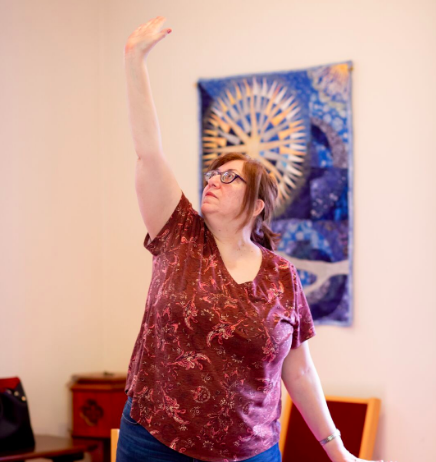
by admin | Apr 27, 2020 | Blog, Program
A new class is open to all people with vision loss: Now and Zen. Join us for an audio described Yoga experience that will facilitate core strengthening, flexibility, and an overall sense of peace and well-being. This class will take place on Wednesdays at 10:00 AM, beginning May 6th. The class will continue through the week of June 8th.
Class dates and times:
May 6, 2020 10:00 AM
May 13, 2020 10:00 AM
May 20, 2020 10:00 AM
May 27, 2020 10:00 AM
Jun 3, 2020 10:00 AM
Jun 10, 2020 10:00 AM
The class will take place via the Zoom platform. Advanced registration is required, as space is limited. This class is free and open to all people who are experiencing vision loss. Follow the link below to register:
https://zoom.us/meeting/register/tJMkc-6qpjIuHNYis4-Lnwcl_8_QaWIQVVxD
After registering, you will receive a confirmation email containing information about joining the meeting. For any questions, please reach out to us via email:
beyondsight@vlanj.org













